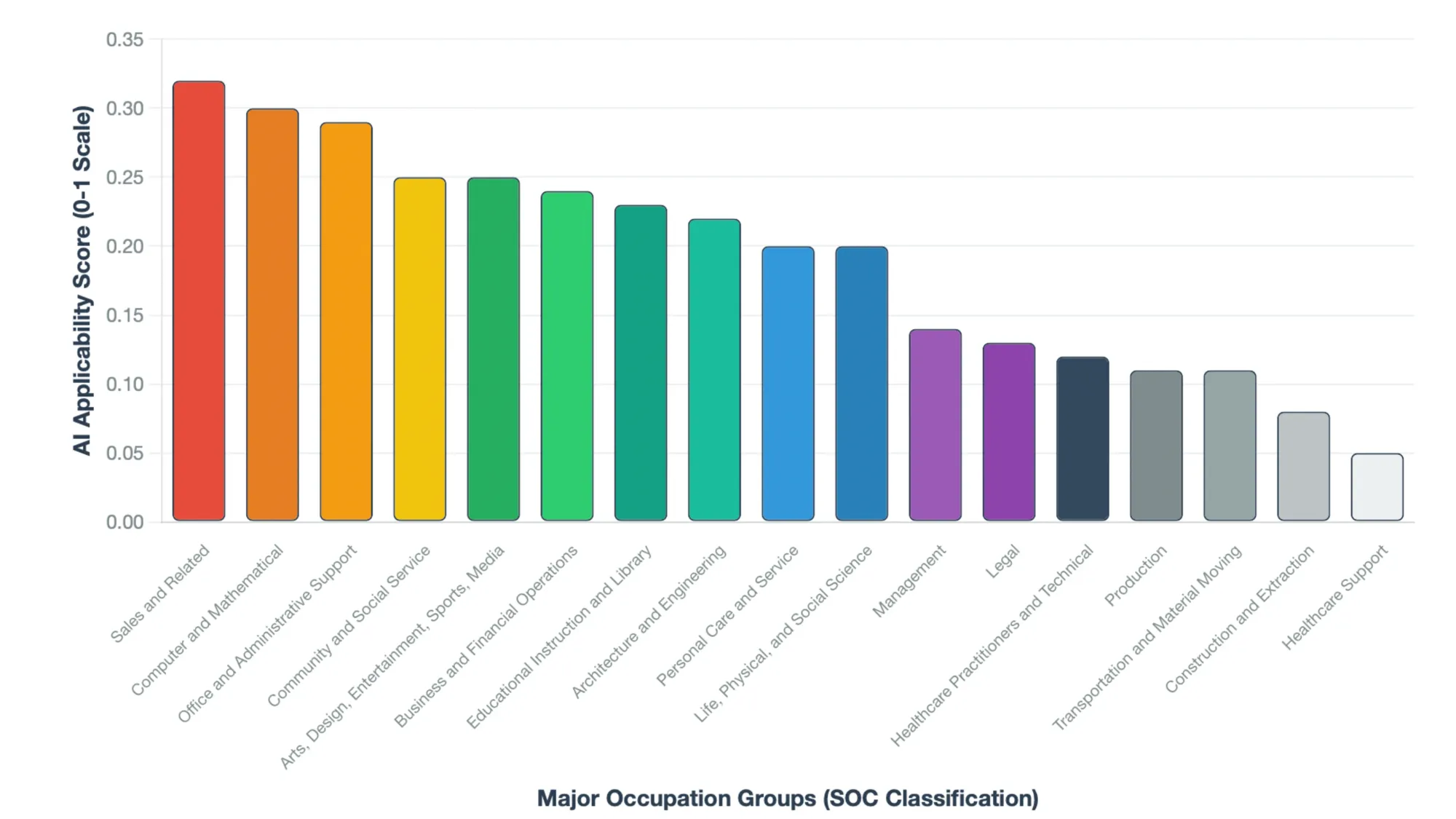AI-Proof Jobs: 7 Roles Safe from Automation (2025 Insight)
Discover the roles AI can't replace, from nursing assistants to electricians. Learn why these jobs remain human domains in the AI-driven future.

The Jobs AI Will Never Kill: Microsoft’s Vision for the Future of Work
As artificial intelligence rapidly transforms the global labor market, Microsoft and other industry leaders have identified a critical divide: while AI is poised to automate or augment many roles, certain jobs remain firmly out of reach for even the most advanced AI systems. According to recent research—including a major Microsoft study—roles requiring hands-on physical labor, emotional intelligence, and complex interpersonal skills are among the least susceptible to replacement by AI. This analysis is not just theoretical; it is shaping workforce strategies, corporate investments, and career advice worldwide.
Which Jobs Are AI-Proof?
Microsoft’s research ranks occupations based on an AI applicability score, which combines how much of a job AI can do (coverage), how completely (completeness), and the variety of tasks it can handle (scope). The findings reveal a clear pattern:
- Jobs most vulnerable to AI: Roles involving routine cognitive tasks, especially those that are communication- or information-heavy, such as interpreters, translators, historians, and customer service representatives. These jobs scored highest for AI applicability, meaning large portions of their workflows can be automated.
- Jobs least vulnerable to AI: Occupations requiring physical dexterity, real-world adaptability, and deep human interaction—such as nursing assistants, dishwashers, roofers, and surgical assistants—scored near zero, indicating AI is currently incapable of taking over these tasks.
A widely cited list highlights 40 jobs most at risk from AI and 40 it can’t touch, based on Microsoft’s methodology. While the full list is proprietary, examples of “AI-proof” jobs consistently include those in healthcare (e.g., nurses, physical therapists), skilled trades (e.g., electricians, plumbers), and roles demanding emotional intelligence (e.g., therapists, social workers).
Why Are These Jobs Resilient?
AI excels at tasks with clear rules, structured data, and repetitive patterns. However, it struggles with:
- Physical manipulation and adaptability: Jobs requiring fine motor skills, situational awareness, and the ability to navigate unpredictable physical environments remain beyond AI’s current capabilities.
- Emotional and social intelligence: Roles that depend on empathy, nuanced communication, and building trust—such as teaching, counseling, and caregiving—are deeply human and difficult to automate.
- Complex judgment and creativity: Professions that involve making high-stakes decisions with incomplete information or that require original, context-sensitive problem-solving are less susceptible to AI replacement.
“Except in areas where they are either relationship-driven or very judgmental, there’s a very good chance these jobs have been replaced entirely,” says an AI consultant with over a decade of experience deploying the technology across nearly 40 companies.
The Broader Impact: Winners, Losers, and the Skills Gap
The AI revolution is not just about job loss—it’s about job transformation. According to the World Economic Forum, 41% of employers worldwide plan to reduce their workforce due to AI in the next five years, while 14% of workers may need to change careers by 2030. High earners and younger workers are most concerned about AI’s impact, and there is a growing skills gap as demand rises for both technical AI proficiency and uniquely human capabilities.
Ireland’s recent labor market data illustrates this shift: AI adoption is up 27% year-on-year, with 54% of workers seeing AI skills as a career catalyst. Yet, job turnover has hit a record 38%, and while burnout has decreased, overall workplace happiness has also declined. This suggests that while AI can alleviate some burdens, it also introduces new stresses and uncertainties.
Industry Response and Strategic Shifts
Microsoft’s “Frontier Firm” strategy exemplifies how leading companies are moving beyond using AI as a productivity tool to embedding AI agents as “virtual coworkers” that handle complex, multi-step workflows. However, only 1% of companies feel they have reached AI maturity, highlighting the challenges of integrating these technologies at scale. The focus is now on orchestrating fleets of AI agents—a fundamental redesign of how work gets done, rather than mere task automation.
Major firms like Klarna and Microsoft itself have announced significant job cuts tied to AI investments, but critics argue that AI is sometimes used as a “good excuse” for broader restructuring. The reality is more nuanced: AI drives both displacement and the creation of new roles, especially in AI development, oversight, and human-AI collaboration.
Context and Implications
The debate over AI and employment is often polarized, but the evidence points to a bifurcated future. Routine, repetitive, and information-based roles are increasingly automated, while jobs requiring physical presence, emotional depth, and creative judgment remain human domains—for now. This has profound implications for education, workforce development, and social policy.
- Education systems must prioritize both STEM skills and “soft” skills like empathy, communication, and adaptability.
- Employers need to invest in reskilling and upskilling programs to help workers transition into more resilient roles.
- Policymakers face the challenge of ensuring that the benefits of AI-driven productivity are broadly shared, while mitigating the risks of inequality and displacement.
Visualizing the AI-Proof Workforce
To illustrate the divide, here are example roles from opposite ends of the AI applicability spectrum:
| Most Exposed to AI | Least Exposed to AI |
|---|---|
| Interpreters & Translators | Nursing Assistants |
| Historians | Electricians |
| Customer Service Reps | Roofers |
| Data Entry Clerks | Physical Therapists |
| Telemarketers | Social Workers |
Conclusion
Microsoft’s research, corroborated by global labor trends, confirms that AI is reshaping the workforce—but not uniformly. Jobs requiring physical skill, emotional intelligence, and complex judgment are likely to remain human bastions even as AI transforms the economy. The challenge for workers, employers, and societies is to navigate this transition wisely: investing in the skills that machines cannot replicate, while harnessing AI’s potential to augment human work rather than replace it entirely.
The future of work will be defined not by the jobs AI kills, but by how humanity adapts to the jobs it cannot.



